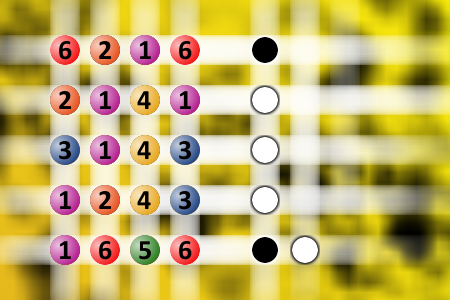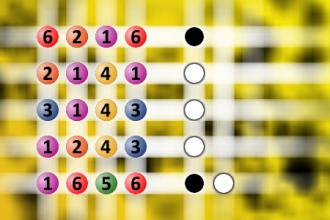Which is a winning combination of digits?
The computer chose a secret code (sequence of 4 digits from 1 to 6). Your goal is to find that code. Black circles indicate the number of hits on the right spot. White circles indicate the number of hits on the wrong spot.Correct answers: 25
The first user who solved this task is Nasrin 24 T.
#brainteasers #mastermind

Two old men - Bert and Harry...
Two old men - Bert and Harry - were sitting quietly in a bar.
"When was the last time you made love to a woman?" Bert asked Harry.
"1945," replied Harry.
"My goodness!" exclaimed Bert. "That's a long time ago."
"Not really," said Harry, glancing at his watch. "It's only twenty past eight now."
"When was the last time you made love to a woman?" Bert asked Harry.
"1945," replied Harry.
"My goodness!" exclaimed Bert. "That's a long time ago."
"Not really," said Harry, glancing at his watch. "It's only twenty past eight now."

